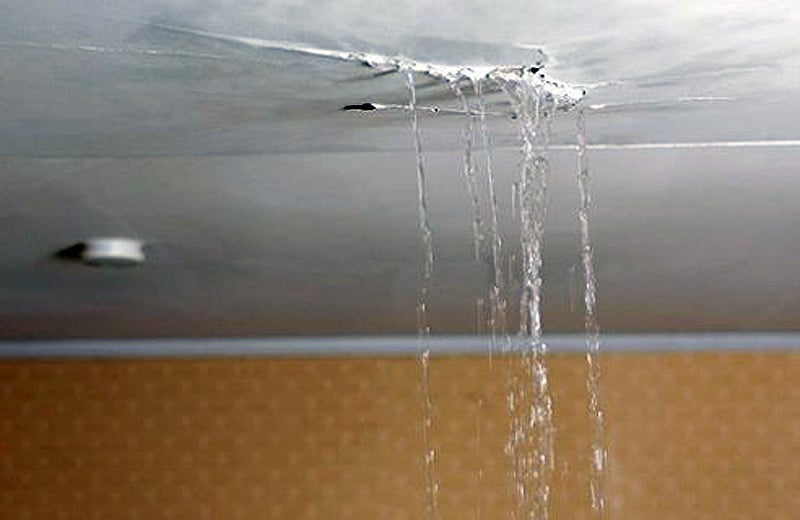Discover The Factors Causing Water Seepage in The House
Discover The Factors Causing Water Seepage in The House
Blog Article
Here in the next paragraph you'll find some high-quality help and advice all about Common Water Leaks In House.

Leakages not only create waste of water yet can also cause unnecessary damage to your house and promote unwanted natural growth. Unfortunately, water leakages may go unnoticed because the majority of the pipework in our house is hidden. By comprehending and looking for daily scenarios that trigger leakages, you can shield your residence from future leakages and also unneeded damages. Today, we will consider 6 leakage creates that may be causing your pipelines to drip.
Intruding origins
Most water leaks start outside the residence rather than inside it. You may discover wet patches or sinkholes in your backyard, and that may suggest that tree roots are attacking water lines creating water to seep out.
Rusty water systems
As time passes by, your plumbing system ages as well as corrosion such as rust may start eating away the pipelines. This could be the cause of staining or warping on your pipes. This requires an evaluation with your plumber instantly. If our plumbing system is old, think about changing the pipes considering that they go to a higher threat of corrosion than the newer designs.
Malfunctioning Pipe Joints
The factor at which your pipelines link is frequently the weakest web link in the waterline. Pipe joints can weaken over time, causing water leaks. The bulk of pipe joints are not easily visible. If you have noisy pipes that make ticking or banging sounds, especially when the warm water is activated, your pipeline joints are most likely under a lot of pressure. It is advisable to have your plumber evaluate your system yearly.
Instantaneous temperature level modifications.
Extreme temperature level changes in our pipes can create them to broaden as well as get all of a sudden. This expansion as well as contraction might cause splits in the pipes, especially if the temperature level are below freezing.
Poor Water Connectors
At times, a leakage can be brought on by loosened tubes and pipelines that provide your home appliances. Generally, moving is what creates the loose water Links. You might find when it comes to a cleaning machine, a hose pipe may spring a leakage due to trembling during the spin cycle. In case of a water connections leak, you might notice water running straight from the supply line or pools around your home appliances.
Obstructed Drains
Clogged drains could be aggravating and also inconveniencing, yet they can often end up creating an overflow causing break pipelines. Keep eliminating any type of materials that might drop your drains that can obstruct them to avoid such inconveniences.
All the above are sources of leakages but not all water leaks arise from plumbing leakages; some leaks may come from roof covering leakages. All leaks should be fixed quickly to avoid water damage.
Leakages not just cause waste of water but can also create unnecessary damage to your house as well as promote undesirable natural growth. By comprehending and also looking for daily circumstances that trigger leakages, you can safeguard your home from future leakages and unnecessary damages. Today, we will certainly look at six leakage causes that might be triggering your pipelines to trickle.
At times, a leakage can be triggered by loose tubes and also pipelines that supply your appliances. In instance of a water connections leak, you might discover water running directly from the supply line or pools around your devices.
How To Check For Water Leak In Your Home
How To Check for Leaks
The average household's leaks can account for nearly 10,000 gallons of water wasted every year and ten percent of homes have leaks that waste 90 gallons or more per day. Common types of leaks found in the home are worn toilet flappers, dripping faucets, and other leaking valves. These types of leaks are often easy to fix, requiring only a few tools and hardware that can pay for themselves in water savings. Fixing easily corrected household water leaks can save homeowners about 10 percent on their water bills.
To check for leaks in your home, you first need to determine whether you're wasting water and then identify the source of the leak. Here are some tips for finding leaks:
Take a look at your water usage during a colder month, such as January or February. If a family of four exceeds 12,000 gallons per month, there are serious leaks.
Check your water meter before and after a two-hour period when no water is being used. If the meter changes at all, you probably have a leak.
Identify toilet leaks by placing a drop of food coloring in the toilet tank. If any color shows up in the bowl after 10 minutes, you have a leak. (Be sure to flush immediately after the experiment to avoid staining the tank.)
Examine faucet gaskets and pipe fittings for any water on the outside of the pipe to check for surface leaks.
Undetected water leaks can happen without the home or business owner even realizing. If you suspect a water leak, but not able to find the source. It is time to contact a professional water leak detection service, The Leak Doctor.
How To Find a Water Leak In Your Home
https://www.leakdoctor.com/blog/How-To-Check-For-Water-Leak-In-Your-Home_AE197.html

I was made aware of that write-up about Top Causes of Home Water Leaks from an associate on a different website. For those who enjoyed our post plz be sure to share it. Bless you for your time. Please stop by our blog back soon.
Top plumbers, call! Report this page